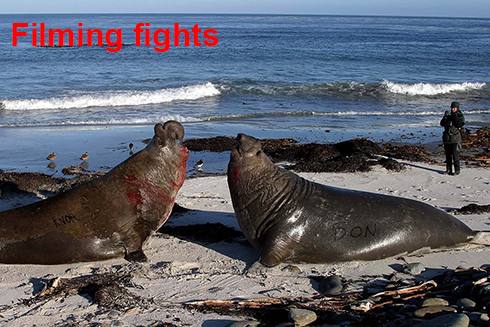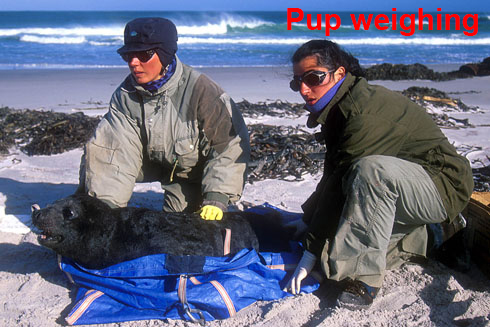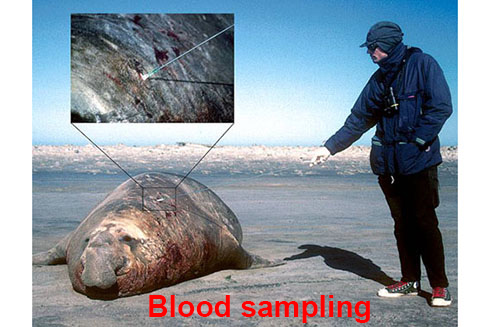The elephant seal project
The research project is focused on behavioural ecology of reproduction of male and female southern elephant seals (Mirounga leonina Linnaeus 1758). We started the project in 1995 and carried on for more than 20 years now, being in the field each year for the whole length of the breeding season, from the end of August to the beginning of December in the early years of the projects, and 7-8 months in recent years. We expect to continue field work this year, and our plan is to carry on the research in the long term, to be able to track the life histories of many individuals for their whole life. The Mirounga genus comprises two species, the northern elephant seal (M. angustirostris), who inhabits the cost of California, and the southern. Southern elephant seals have a circumantarctic distribution, with populations grouped in three main stocks (South Georgia, Kerguelen, and Macquairie).
The
elephant seal population of the Falklands is part of the South Georgia
stock, which includes South Georgia, the South Orkney Islands, King
George Island, Gough Island and the Valdes Peninsula. The Falklands
population could provide a link between the two larger populations
of the breeding stock, namely those of South Georgia and the Valdes
Peninsula, but it appears to be almost isolated from these two populations
during the breeding season.  Our research area is Sea
Lion Island (52° 26' S; 59° 05' W), the main breeding site of elephant
seals in the Falkland Islands. We are also collecting a lot of information
about the general biology of the population, and we are trying to
put together information about elephant seals in the rest of the
Falklands.
Our research area is Sea
Lion Island (52° 26' S; 59° 05' W), the main breeding site of elephant
seals in the Falkland Islands. We are also collecting a lot of information
about the general biology of the population, and we are trying to
put together information about elephant seals in the rest of the
Falklands.
Sea Lion Island shelter a small, localized population of elephant
seals, that we are studying in great detail by marking almost all
breeding individuals every season, by spending a large amount of
time in the field doing behavioural observations, and by using a
mixture of different techniques to gather accurate measurements
of different aspects of individual phenotype of males and females.
The field work carried on until now resulted in:
-
the first base of information on demography, socionomy and breeding biology of the elephant seals of the Falklands, a population previously completely unknown
-
the tagging of almost all breeding individuals and of four whole cohorts of pups, that will permit the study of life histories of males and females in the long term
-
the collection of data about social behaviour of both males and females, that will serve for a comparison with data we have previously collected in the Valdes Peninsula (Argentina)
-
the recordings of a large sample of elephant seals vocalizations, that represent the first established base of information about acoustic communication in this species
-
the build up of an expanding data base of measurements of structural and behavioral phenotype of breeding males, to be used in the analysis of sexual selection by male competition and female choice
-
the collection of a large number of skin samples from marked individual for DNA extraction and analysis, that should permit a better understanding of the genetic structure of the local population of Sea Lion Island, and a first asessment of the relationships of the Falklands population with other populations of the South Georgia stock
















